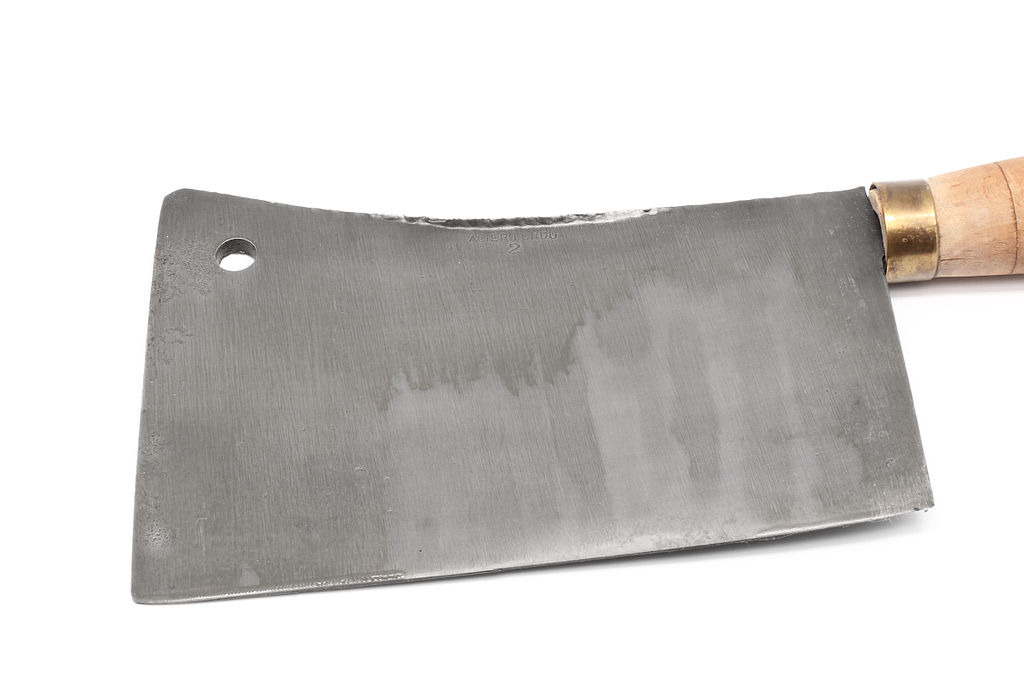The Chinese cleaver knife is one of the most popular in homes. It is a razor-sharp knife used for chopping meat, seafood, and vegetables.
A Chinese chef will use it repeatedly throughout everyday cooking. This cutting tool can operate remarkably effectively if you acclimate to its form and cutting method. This article will review its applications and provide advice.
How to Use a Chinese Cleaver
A Chinese cleaver is a multi-purpose knife with qualities ideal for Chinese cooking cutting methods. The six primary cutting methods are slicing, chopping, dicing, crushing, stripping, and notching.
Cutting vegetables as well as meat is a common use for a Chinese cleaver. Depending on the weight and thickness of the blade, it can also be the best option for cutting tiny bones like chicken wings.
For moving sliced parts off the cutting board, the larger blade of the Chinese cleaver comes in quite handy. Yet, you can need many skills and effort to master.
When you get the hang of it, the knife’s many uses will become apparent. Some of the Chinese cleaver’s cutting methods are listed below:
1. Holding
You first need to learn how to grip that large cleaver. It’s crucial to choke up on it since it will have a balancing point further out on the blade than other knives.
You may get greater control and reduce the strain on your arm by pinching the knife’s spine close to the point of balance with your index and thumb.
It would help if you made contact with the side of the blade with the second knuckle of your middle finger on your non-knife hand, with the fingertips curled out of the way.
2. Cutting
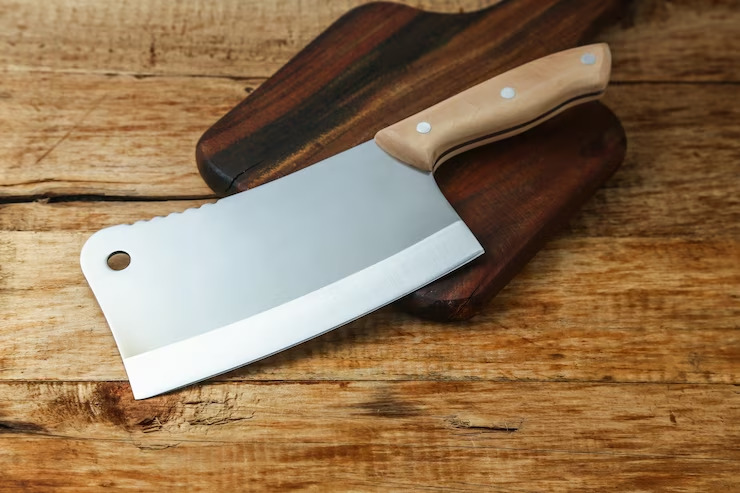
With a cleaver, you cease supporting the weight and push or drag the blade along the object you wish to cut. It’s similar to controlling how your chopper descends through the meal and bringing it back up to make the next cut.
The regular cycle of tension and release can be highly calming if you get the hang of it. Also, it is far less exhausting than always bearing all that weight!
Avoid chopping and whacking with a cleaver, even if it could be alluring to do so! Get a meat cleaver if you need a strong knife for cutting bones.
3. Mincing
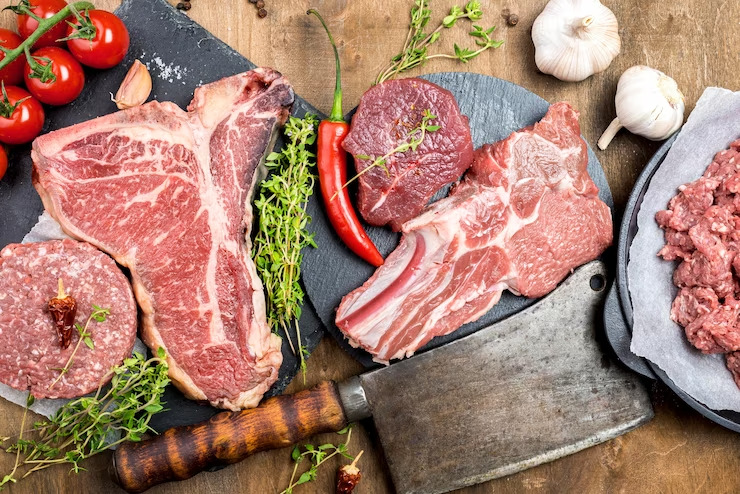
There are two methods of mincing. Your choice and the knife you use are usually considered when choosing a plan.
Method 1:
- Hold the knife as you would like a vegetable fork.
- Letting the knife fall downward against the flesh like an ax would lift the cleaver off the board.
- After each operation, gather the meat back together into a pile for a smooth mincing result.
- Swivel the blade in this fashion, continuing until it minces the meat.
Method 2:
- Using your free hand, place two or three fingers on the top blunt portion of the cleaver blade. Your knife is stabilized by this hand when you move it to mince.
- Raise the Chinese cleaver while keeping the knife’s tip in contact with the board, then lower it while swiveling the blade to mince the meat.
4. Slicing
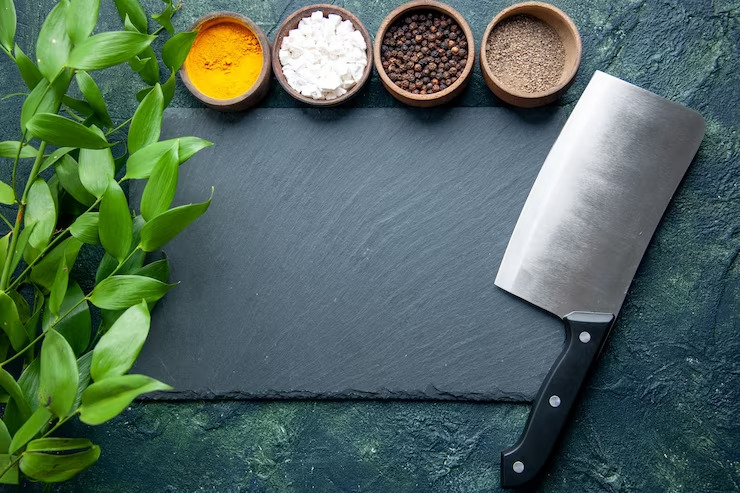
In Chinese cuisine, slicing plays a very significant role. Smaller portions of ingredients are easier to stir and burn, cook more quickly with less heat source, and are easier to grasp with chopsticks.
The narrow tips of the Chinese cleaver make it perfect for chopping meat and veggies. There are three approaches: diagonal, vertical, and roll cut.
We utilize the diagonal cut for tough, fibrous vegetables and coarse-grained meats. Use vertical slicing for delicate foods like mushrooms, scallops, and liver.
The rolling cut is a version of the diagonal cut for coarse, cylinder vegetables like carrots, radishes, and beets that are appropriate for slow cooking.
Cut the veggies into slices by rolling and slicing them.
- Take hold of the Chinese cleaver with your cutting hand.
- Position the chopper so that it is horizontally towards the cutting board and the meat.
- Put the free hand firmly on top of the meat to support it.
- Use the cleaver or knife to chop into the flesh, careful not to slash your hand holding the meat.
5. Chopping
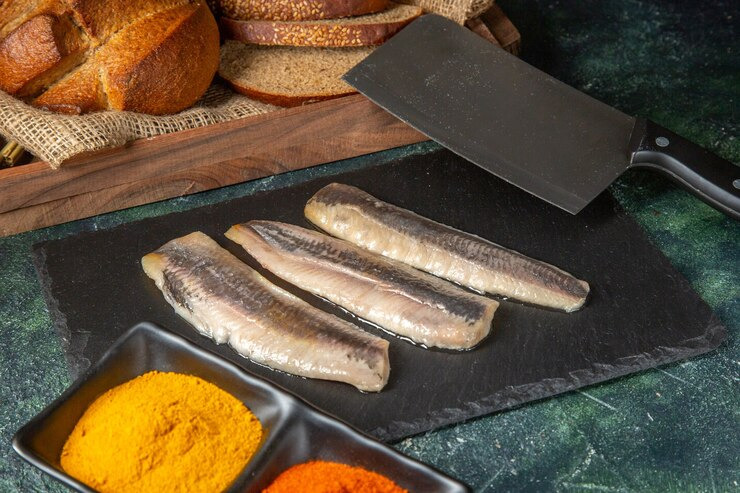
Using a Chinese cleaver to cut is relatively frequent and straightforward. It is practical and simple to use.
Soups and stews are two typical dishes that employ this approach. The components are swiftly chopped first in one way, then the other.
Crosswise motions until the contents seem like they have been through a miner.
Why are Cleavers Used in Chinese Cooking?
Many cooks love carbon steel Chinese cleavers because of their sharpness and adaptability. You can quickly transition from slicing veggies to butchering meats in an emergency without getting another knife.
Can You Use a Chinese Cleaver for Everything?
Every cooking task requiring chopping, mincing, or slicing food calls for a high-quality Chinese cleaver knife. The functional knife has a purpose for each component.
The Chinese cleaver has enough force to cut through almost anything because the spine weighs more than the blade. You may use it to mince meat after julienning or scoring vegetables.
A Chinese cleaver, for instance, can be used to filet fish and remove the scales. Then, it can finely slice vegetables.
You may also utilize the broad blade to transfer food from a cutting board to a cooking dish. Besides, it’s helpful collecting and chopping firewood and carving chopsticks out of wood.
How do You Cut Vegetables with a Chinese cleaver?
Although people typically use a cleaver to chop vegetables, you may learn various skills. The following is a small sample of the numerous innovative cutting techniques you can practice.
Slicing and chopping
- Slice the vegetable smoothly downward, pulling the cleaver from the cutting board each time before producing the next slice.
- Use a moderate thrusting motion when cutting below if that is more comfortable.
- Then, chop veggies using the same technique into the desired shape.
Transferring
- Holding the cleaver handle, place the knife at a minimal angle horizontally next to the chopped veggies.
- With the free hand, scoop the veggies onto the wide section of the blade as you slide the cleaver below the vegetables.
- Use your free hand to secure them on top of the cooking dish while you transfer the ingredients, preventing spills. Avoid putting your free hand too close to the cleaver’s pointy end.
What is a Hole in a Chinese Cleaver for?
Thanks to the hole, you may use your fingers to grip the upper half. You may draw the blade free by tightening your hold on the handle.
Final Thoughts
Chinese cleavers deliver expert-level chopping with maximum control. Also, their design guarantees accuracy when cutting for years.
While it appears large, it is light and portable. If you acclimate to its form and cutting method, you can operate remarkably effectively with this cutting tool.

